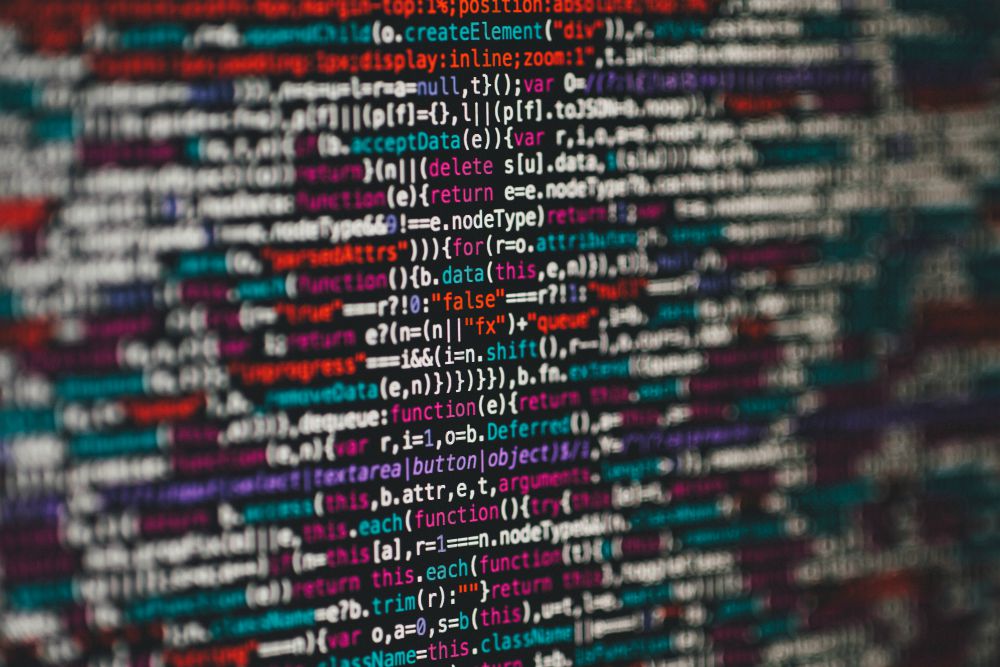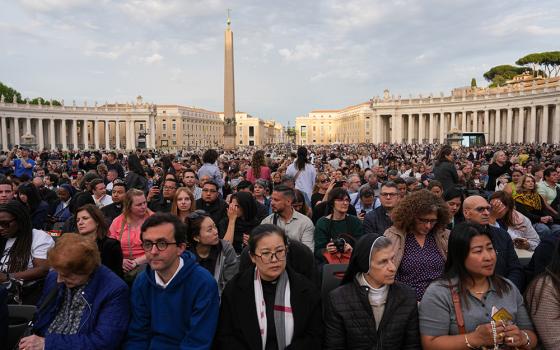
(Unsplash/Markus Spiske)
Prius or Pickup? How the Answers to Four Simple Questions Explain America's Great Divide, by Marc Hetherington and Jonathan Weiler, two professors at the University of North Carolina at Chapel Hill, wins the prize for catchiest title of a recent book in political science. But the book itself reminds me why I have always objected to calling politics a science in the first place.
The argument they make, as the title implies, is that the reason America's political landscape is increasingly polarized — and not just America's, but Europe's as well — is that our partisan divides now overlap with differences in worldview, and so the polarization is deeply rooted. They argue that these underlying worldviews are essentially characterized by emotion more than reason. "The crisis of worldview politics is so intractable in large part because it is rooted in human psychology," they write.
This Humean approach to politics can prove its value, the authors insist, by asking American voters not about their views on the size of government, or whether they support increased regulation of the economy. No, the key questions are those that pertain to rearing children:
Although there are a number of qualities that people feel children should have, every person thinks that some are more important than others. I am going to read you pairs of desirable qualities. Please tell me which one you think is more important for a child to have:
- Independence versus respect for elders
- Obedience versus self-reliance
- Curiosity versus good manners
- Being considerate versus being well-behaved
I know, I know. Why so binary? Can't a child be both considerate and well-behaved? Self-reliant and obedient? But if Hetherington and Weiler are correct, the answers to these questions yield three distinct groups, those who possess a "fixed" worldview, those who possess a "fluid" worldview, and those whose worldview is a mixture of fixed and fluid. And once you realize that most people are mixed, but that the mixed lean more heavily to the fixed than the fluid, you will understand how Donald Trump became president.
"Reason is, and ought only to be the slave of the passions, and can never pretend to any other office than to serve and obey them," observed the Scottish empiricist, summing up his philosophy. He would nod in approval were he to read Hetherington and Weiler write, "At its root, someone's worldview is a reflection of their primal alertness to the relative safety or danger of their environment."
Still, I wonder if Hume could endorse some of this book's claims. For example, the authors write, "This merging of worldview and partisanship stands in marked contrast to the 1990s. … In '92, the fixed and the fluid were both nearly identical in their party choices." They have graphs to prove it. But is it not the case that what we witnessed in the 1990s was that the southern chickens of the GOP's "Southern strategy" finally came home to roost for good, while the last vestiges of Rockefeller Republicanism were dying out in the Northeast? These explanations are not mutually exclusive, to be sure, and maybe this is a chicken-and-egg conundrum, but the authors do not indicate there is a conundrum at all, just their data that yields one, and only one, explanation.
Advertisement
Or take this example: "After 2000, however, the percentage of partisans with hatred in their hearts [for the partisans opposite] rose with each election. … This increase in negativity coincides with the alignment of Americans' worldviews and political identities," Hetherington and Weiler write. But I looked at the exact same data and said to myself, "Roger Ailes." Throughout this book, one of my most frequent marginal notes was "cause/effect." The narrative the writers deduce from their data is not happening in a vacuum, but in history. At the time, and in retrospect, there are thousands upon thousands of what ifs.
A final example of the authors' too narrow focus: "Religion mattered a lot to the fixed, with more than three-quarters answering either very (51 percent) or somewhat (26 percent) important," they note. "The fluid were a near mirror image, with only 12 percent answering very important and another 19 percent answering somewhat important." And the authors are right that this is one less social space where the fluid and the fixed will intermingle, and that religious commitment has joined the rural/urban divide, along with the Prius/pickup divide as indicators of partisan affiliation. But religion has not been static in the years of these political surveys, has it? In the 1960s, the most obvious face of religion in the public square was the Rev. Martin Luther King Jr. or the Kennedy's friend Cardinal Richard Cushing, or Yale chaplain William Sloane Coffin. Today? Jerry Falwell Jr., Joel Osteen and EWTN.
Books like this overreach when they seem too determined to prove their case, too willing to ignore anything that might mitigate their conclusions or complicate their explanations. Despite their pretensions to the contrary, the social sciences are not really science because society is not nature, and human beings are not widgets. This book would have been much, much better if they had recruited a historian to co-author this tome.
That said, every Democrat running for office in 2020 and everyone who works on their campaigns should read this book because the authors are obviously on to something: People who are afraid can become easy pickings for demagogues. When analyzing the persistence of certain types of prejudice, along lines of race, ethnicity or religion, for example, they observe, "So when Donald Trump spoke in the harshest terms about immigrants, he probably was risking less than most people realized at the time." And a couple of pages later: "The persistence of negative attitudes toward historically marginalized groups is significant, because in a complex, diverse modern society, social tensions never go away entirely, even if they're often submerged. Opportunistic leaders can cause those attitudes to surface, by aggravating and playing upon those tensions to win support from people who feel most negatively about those 'others.' " Before there were the victims of crime perpetrated by an undocumented immigrant, there were the Sudeten Germans. Before Trump, there was Slobodan Milosevic.
Whatever reservations I have about some of the authors' causal claims, I think these conclusions about the stakes of our political life today are on target and require those of us who wish to resist the Bannonite vision to learn as much as we can about those who are not white nationalists but who voted for Trump nonetheless. Yes, the Democrats had a candidate who had no ear for politics, but the problems these authors identify are deeper than that.
Nor do Hetherington and Weiler's theories preclude important supplemental information. For example, John Judis wrote an important essay last year in The Washington Post in which he argued that economics, not culture, was the key to understanding the divides in American politics. "Red and blue America aren't separated just by their cultural politics; they are separated by sharp differences in how their economies have developed over the past half-century," Judis wrote. "And those economic differences can, in turn, explain many of the cultural differences that so bedevil our political system." I thought at the time that Judis undervalued culture realities, just as while reading Prius or Pickup? I thought that the authors neglected economics. The real answer is "both/and" not "either/or."
In the middle of the period of time in which the authors argue political divisions were becoming entrenched as worldview divisions, much more resistant to persuasion, still less change, much more threatening to democracy, the people of the United States elected our first black president. Four years later, they, we, re-elected him. The iconic campaign poster in 2008 featured Barack Obama's face and the word "hope." Hetherington and Weiler may be right that the 2016 results show how indelible worldview considerations really are, that we humans are somewhat hopeless when our fears are roused, but the 2008 and 2012 results indicate that people can stretch, they can use their reason in choosing a candidate as well as their fear, that there is nothing irrevocable or impossible in politics, even while we should temper our expectations about what politics can accomplish and recognize the power of culture and economics to circumscribe political options in important ways.
No Catholic can be a Humean, but this book is nonetheless an important read for anyone who cares about the country and is willing to be bracingly candid about the challenges we face on account of people's prejudices and passions. Let us examine with these authors the fears that stalk many of our fellow citizens, and consider, too, the ways those fears shape our culture and our society. But let no one succumb to those fears, nor abandon the effort to bring hope to the fearful. Hetherington and Weiler do an able job presenting a part of the human equation, but their limits are evident in these sentences: "To people who value hierarchy, undermining traditions is dangerous because they are what have kept dangers at bay for millennia. … By their very nature, cultural traditions entrench existing social hierarchies, even if people don't consciously think about them that way." I could not resist noting in the margin, "Cf. Magnificat."
[Michael Sean Winters covers the nexus of religion and politics for NCR.]
Editor's note: Don't miss out on Michael Sean Winters' latest: Sign up to receive free newsletters, and we'll notify you when he publishes new Distinctly Catholic columns.





